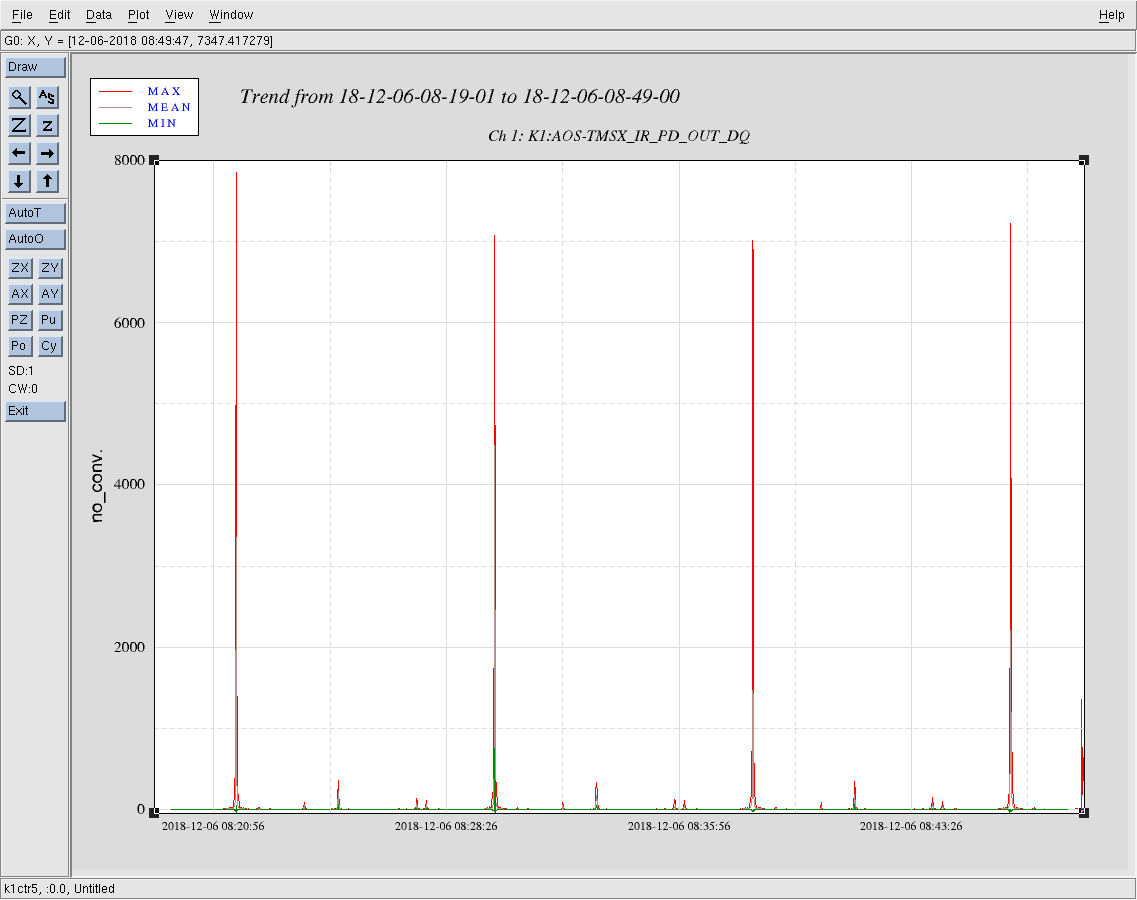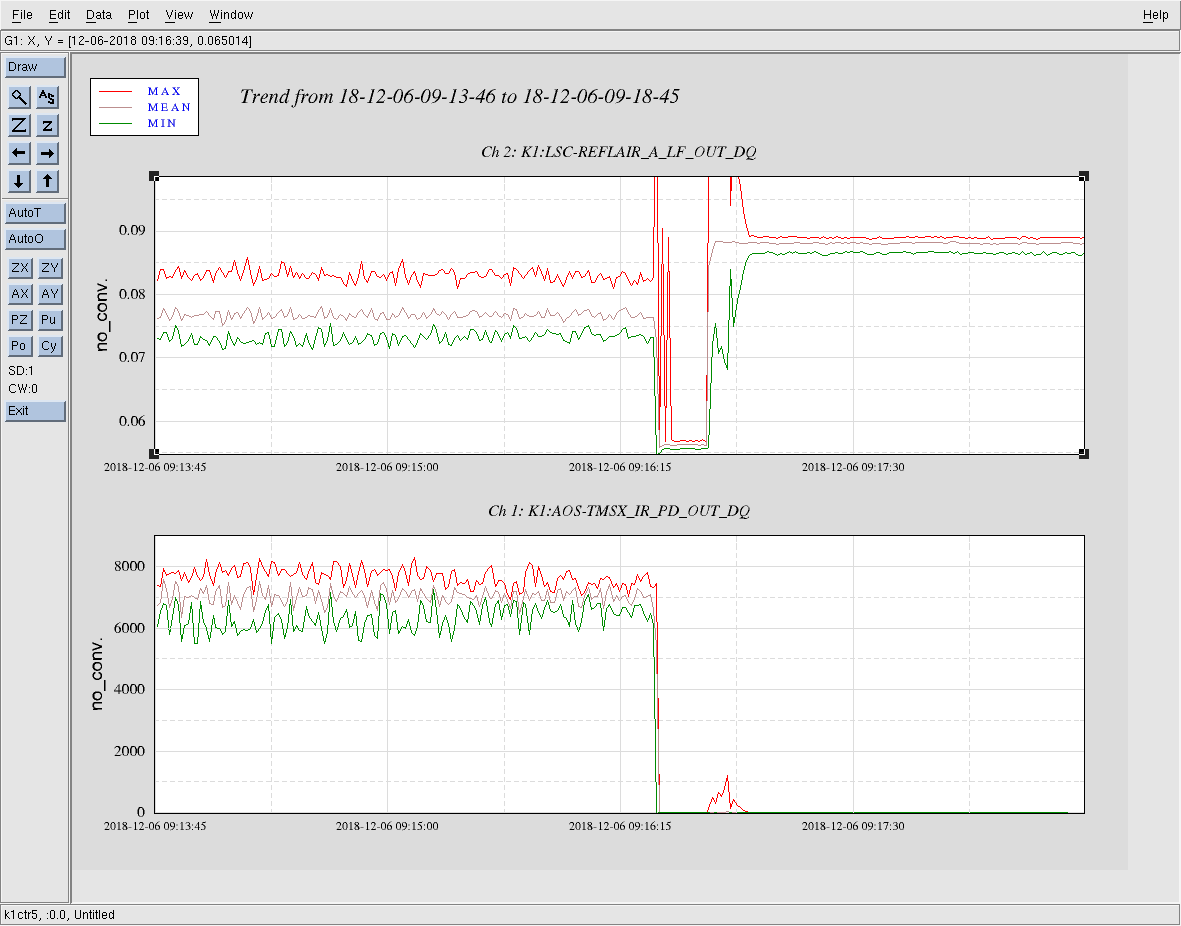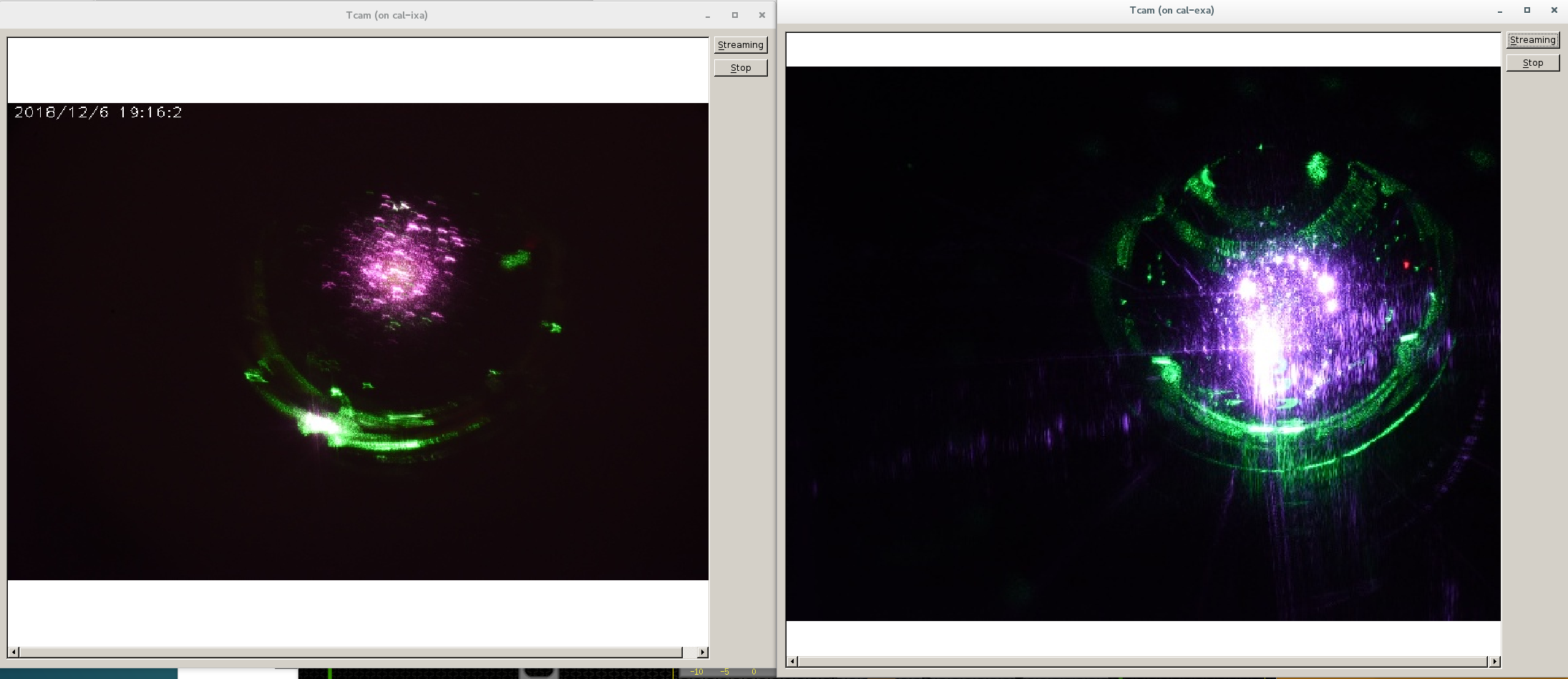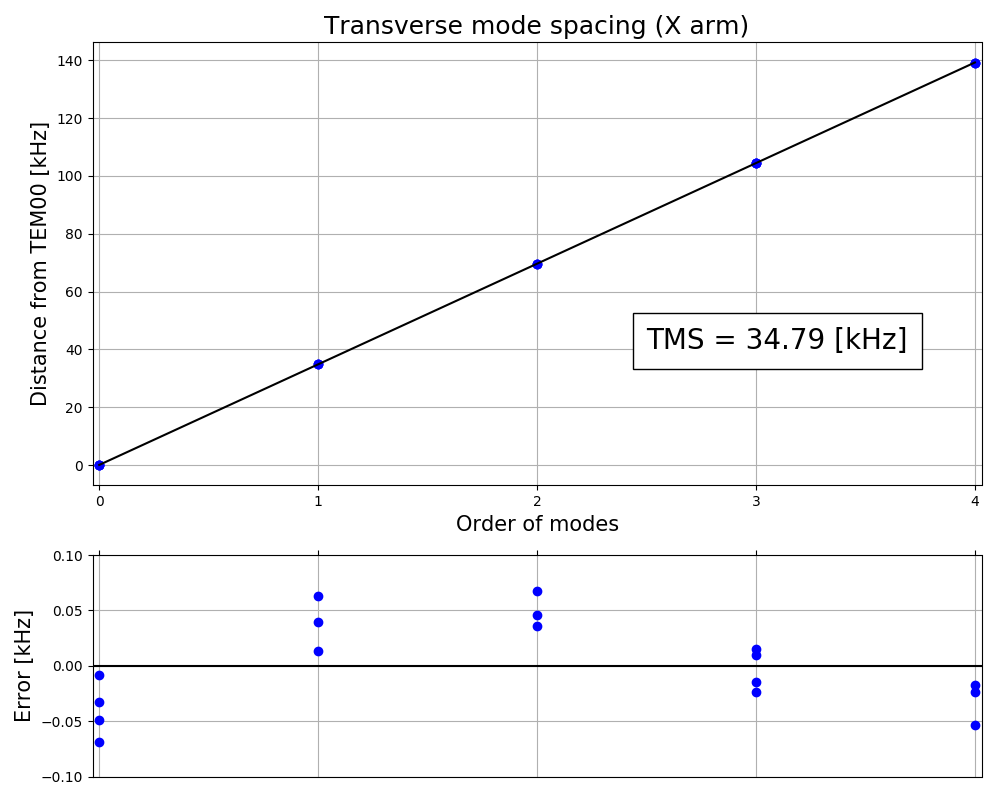[Miyazaki, Enomoto]
Today we have done a couple of measurements and some trial. In this log, we would like to summarize what we did today.
The detailed analysis of the measurements will follow.
= Measuements =
Today's main goal was to see if we can do the measurements like these and to establish the method and procedure of them.
1. Cavity scan
While controlling the main laser frequency with respect to X arm cavity by ALS, we swept the main laser frequency by sweeping the PLL offset frequency.
We swept by more than 3 FSRs.

2. Loss measurement (reflectivity of X arm when locked)
We measured the power of light the REFL PD recieved when X arm was locked and when ETMX was misaligned.
Comparing them we will have (roundtrip loss + TETM) * (the ratio of TEM00 carrier field) (See LIGO-G1501547, for example).

= Direct Catch of X Arm Resonance =
We tried to directly lock the main laser frequency to X arm without using ALS, and succeeded.
The procedure to directly lock it we established is the following:
0. prepare CARM servo like this.
IN1 gain: 26 dB
IN1 disabled
No common boosts enabled
Fast gain: 12 dB
Fast enabled:
"MCL" filter in LSC-MCL turned on, and set LSC-MCL_GAIN to be 1.2
1. enable IN1.
2. wait a few seconds for X arm being locked.
3. enable two common boosts
4. enable "boost" in LSC-MCL
Note:
* changed the f1 frequency from 18.88 MHz to16.87515 MHz
* Before the last trial of the cavity scan, we set the FG output for f1 from 10dBm to 15dBm, and forgot to set this back to 10dBm
* At the end of the day, we checked the IR beam spot position on each test mass, and found that the spot on ETMX looks too low. We have to repeat the measurements with good beam spots









